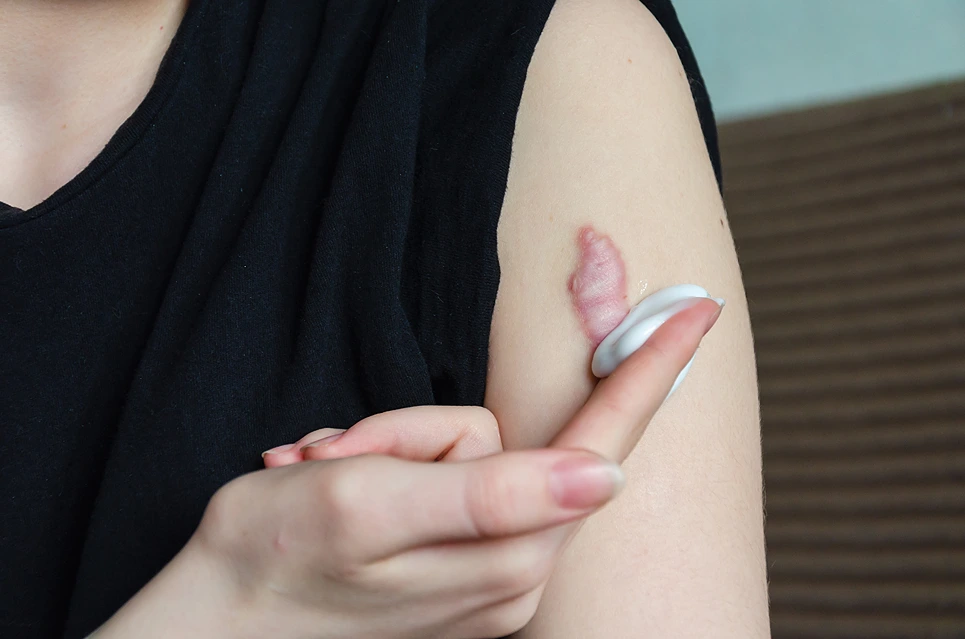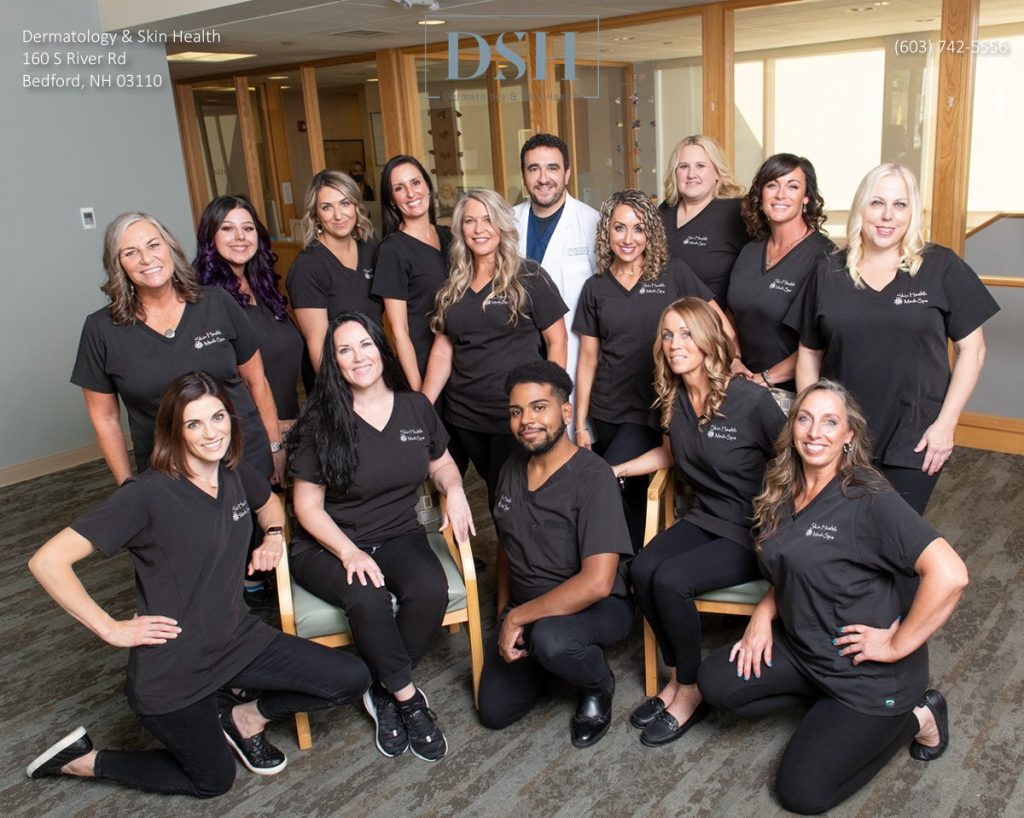


Aquaphor after mohs surgery helps the wound heal properly and prevents scarring. Applying a thin layer seals in moisture, protects against infection, and soothes skin to optimize recovery after the procedure.
For many skin cancer patients, Mohs surgery is the best treatment option available today. Mohs surgery is a specialized technique often used to remove certain skin cancers. The surgery aims to precisely remove tumors and maximize healthy skin preservation.
Optimal recovery doesn’t end once the surgery is over. Proper aftercare is crucial for healing the wound left behind with minimal scarring or complications. That’s where Aquaphor—a simple over-the-counter ointment—can make a big difference in your post-Mohs recovery.
In this guide, we’ll discuss the benefits of using Aquaphor after Mohs and provide tips on how to use it correctly during the healing process. We’ll also cover what results you can expect, warning signs to watch for, and when to follow up with your doctor.
Mohs surgery is a specialized technique used to treat skin cancers like basal cell carcinoma and squamous cell carcinoma. It differs from conventional surgery in that tissue is microscopically examined during the procedure to ensure all cancerous cells have been removed.
During Mohs surgery, the visible tumor is first removed. A thin layer of additional tissue surrounding the tumor site is also taken out. This peripheral tissue is meticulously mapped, frozen on a cryostat, stained, and examined under a microscope by the surgeon to check for remaining cancer cells.
If any cancer cells are still present, the surgeon takes another tissue layer from the precise area where cancer cells remain and repeats the microscopic analysis. This process continues layer-by-layer until the margins are completely clear of cancer. This allows complete and safe removal of the skin cancer while preserving as much healthy tissue as possible.
Mohs is highly effective, with cure rates up to 99% for non-melanoma skin cancers. It helps limit the amount of normal skin removed and minimizes scarring. Mohs may be recommended for large tumors, cancers with poorly-defined margins, high-risk areas like the face, aggressive cancer subtypes, or if there is recurrence after prior treatment.
After the surgery, the vacant wound left behind requires proper aftercare for optimal healing. That's where using Aquaphor can help speed the healing process.
Schedule a consultation with our board-certified dermatologists at Dermatology & Skin Health today to determine if Mohs surgery is right for you
How Does Aquaphor Help After Mohs Surgery?
Aquaphor is an over-the-counter skin protectant commonly recommended by dermatologists and surgeons for post-surgical wound healing. The active ingredient in Aquaphor is petrolatum, a semi-solid mixture of hydrocarbons that provides the ointment’s hydrating and protective qualities.
Applying Aquaphor after Mohs surgery provides multiple benefits to the healing wound:
| Benefit | Explanation |
| Seals in moisture | The thick, oily base of petrolatum in Aquaphor creates a protective barrier that prevents moisture loss from exposed tissue. Keeping the surgical wound moist is critically important, as moisture accelerates wound closure and epithelialization. Maintaining proper moisture levels reduces scarring and enables the tissue to heal with minimal damage to the surrounding skin. |
| Protects against infection | The petrolatum barrier also serves to guard the surgical site against bacteria and other microbes that could otherwise invade the open wound. This helps prevent postoperative infections, which are a serious complication that can delay healing. Using Aquaphor reduces the risk of both bacterial and fungal infections. |
| Soothes skin | In addition to protecting skin, Aquaphor also soothes and relieves discomfort due to its mild analgesic effects. This can provide relief if the surgical site is painful or irritated, as is common after Mohs surgery. The occlusive barrier has a calming effect on inflamed skin. |
| Minimizes scarring | By keeping the wound moist and protected from external irritants, Aquaphor provides an optimal environment for tissue regeneration and re-epithelialization. This enables the skin to heal properly with minimal scarring. Regular application helps minimize permanent marks or discoloration. |

Applying Aquaphor correctly is key to harnessing its protective powers after Mohs surgery. You can follow these steps for proper application:
For most patients, Aquaphor is extremely well-tolerated after Mohs surgery. However, there are a few potential side effects to be aware of:
If Aquaphor is not well-tolerated, alternative ointments include Bacitracin, Vaseline, and plain petroleum jelly. Non-petrolatum options like silicone gels or calcium alginates are also available.
Speak with a Dermatology & Skin Health provider to discuss potential side effects of Aquaphor and explore alternative ointment options for your unique skin needs
Can I Wear Makeup After Applying Aquaphor?
Many patients wonder if they can wear makeup to camouflage scars or scabs after Mohs surgery. In general, it’s recommended to avoid applying makeup over top of Aquaphor or directly on an open wound. Reasons to avoid makeup after surgery include:
Once the wound has closed fully and any sutures have been removed, light mineral makeup applied adjacent to but not directly on the incision is generally okay. Avoid makeup over any scabs. Check with our surgeons about cosmetic use once healing progresses. With proper wound care, scars do significantly improve over time.

The recommended duration of Aquaphor use depends on the specifics of your Mohs case:
| Wound Size | Recommended Duration of Aquaphor Use |
| Small wounds or biopsies | 3-5 days |
| Medium-sized defects | 1-2 weeks until sutures are removed |
| Large wounds spanning several centimeters | 2-4 weeks after surgery |
| Grafts or flaps with sutured donor sites | Apply to reconstructed and donor areas for 2 weeks or longer |
In all cases, continue Aquaphor until the surgeon advises you to stop or you notice the wound has fully closed and sealed over. The ointment is very safe for prolonged use, so error toward longer application if unsure. You can gradually reduce application frequency as the wound improves.
Despite best efforts, some post-surgical infections do occur. Signs of potential infection after Mohs surgery include:
If you notice any of these symptoms or simply feel like the wound looks abnormal, promptly contact Dermatology & Skin Health today. Catching infections early is key, and most are readily treatable with antibiotic ointments or oral antibiotics. Rarely, severe infections may require hospitalization for intravenous antibiotics and wound care.
In addition to clear infections, several other post-operative issues warrant promptly notifying your surgeon:
Your surgeon wants to be informed about any abnormal postoperative symptoms, no matter how minor they may seem. Prompt evaluation helps prevent bigger complications down the road.

When used correctly, Aquaphor is an excellent wound healing aid after Mohs surgery. Be diligent applying a thin layer multiple times per day, while closely monitoring the site for proper healing.
At Dermatology and Skin Health, we take great pride in our Mohs surgical outcomes. Our experienced surgeons excel at eradicating skin cancers while preserving healthy tissue. We carefully counsel patients on ideal postoperative wound care regimens customized to each unique case.
If you have an upcoming Mohs procedure with us, don’t hesitate to discuss aftercare instructions with your surgeon. We’re always happy to answer questions and ensure you heal your very best.
Schedule a personalized post-op evaluation at Dermatology & Skin Health to ensure you're using Aquaphor optimally to achieve flawless healing after your Mohs surgery
If your desired appointment type or preferred provider is unavailable online, kindly call (978) 525-0100 for Peabody, MA and (603) 742-5556 for all New Hampshire locations. Alternatively please feel free to send us your request via the patient portal, or via email at info@dermskinhealth.com
*For medical dermatology appointments in MA please dial (978) 525-0100 or fill out the appointment request form above.